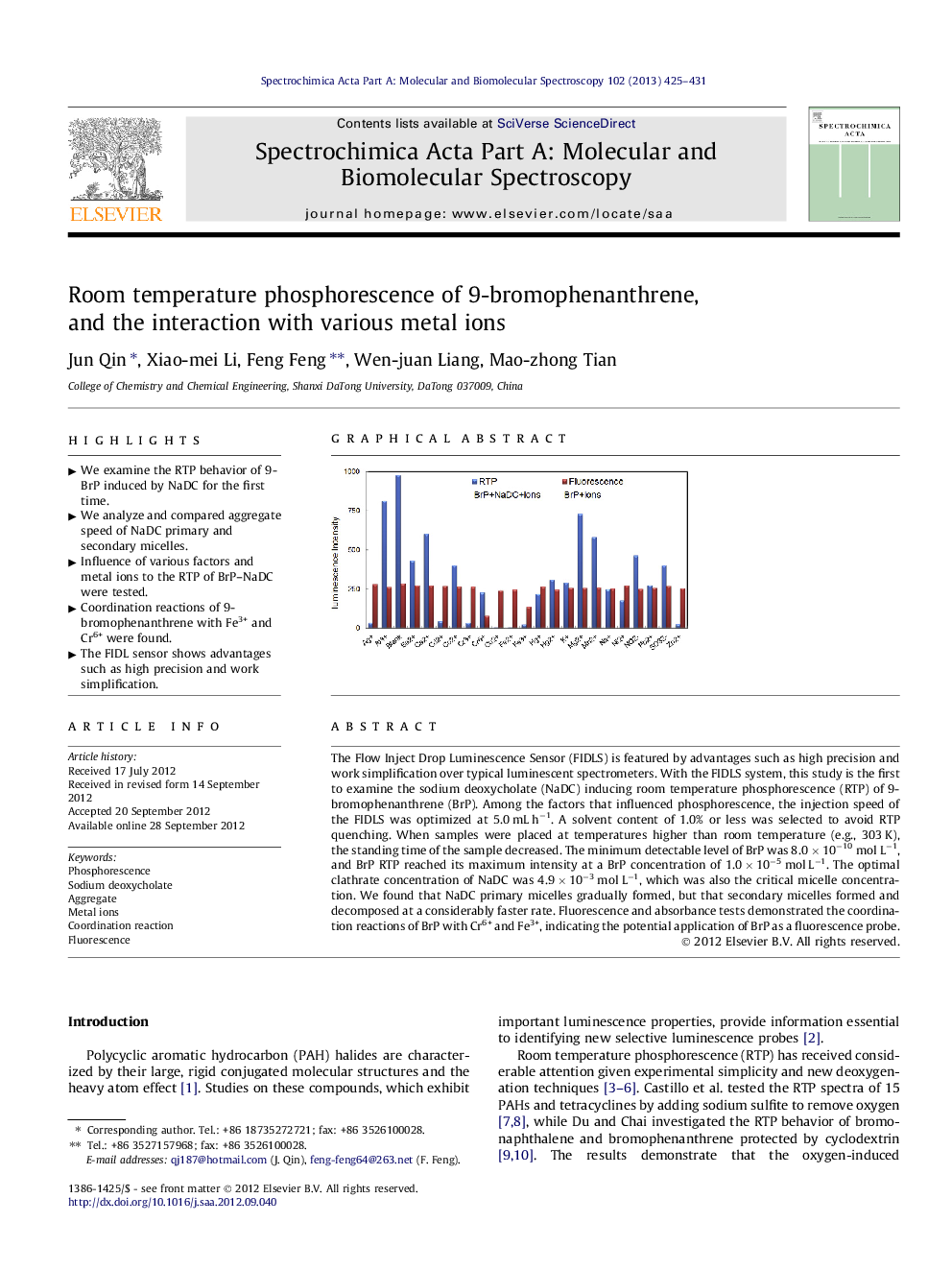| Article ID | Journal | Published Year | Pages | File Type |
|---|---|---|---|---|
| 1231505 | Spectrochimica Acta Part A: Molecular and Biomolecular Spectroscopy | 2013 | 7 Pages |
The Flow Inject Drop Luminescence Sensor (FIDLS) is featured by advantages such as high precision and work simplification over typical luminescent spectrometers. With the FIDLS system, this study is the first to examine the sodium deoxycholate (NaDC) inducing room temperature phosphorescence (RTP) of 9-bromophenanthrene (BrP). Among the factors that influenced phosphorescence, the injection speed of the FIDLS was optimized at 5.0 mL h−1. A solvent content of 1.0% or less was selected to avoid RTP quenching. When samples were placed at temperatures higher than room temperature (e.g., 303 K), the standing time of the sample decreased. The minimum detectable level of BrP was 8.0 × 10−10 mol L−1, and BrP RTP reached its maximum intensity at a BrP concentration of 1.0 × 10−5 mol L−1. The optimal clathrate concentration of NaDC was 4.9 × 10−3 mol L−1, which was also the critical micelle concentration. We found that NaDC primary micelles gradually formed, but that secondary micelles formed and decomposed at a considerably faster rate. Fluorescence and absorbance tests demonstrated the coordination reactions of BrP with Cr6+ and Fe3+, indicating the potential application of BrP as a fluorescence probe.
Graphical abstractFigure optionsDownload full-size imageDownload as PowerPoint slideHighlights► We examine the RTP behavior of 9-BrP induced by NaDC for the first time. ► We analyze and compared aggregate speed of NaDC primary and secondary micelles. ► Influence of various factors and metal ions to the RTP of BrP–NaDC were tested. ► Coordination reactions of 9-bromophenanthrene with Fe3+ and Cr6+ were found. ► The FIDL sensor shows advantages such as high precision and work simplification.
